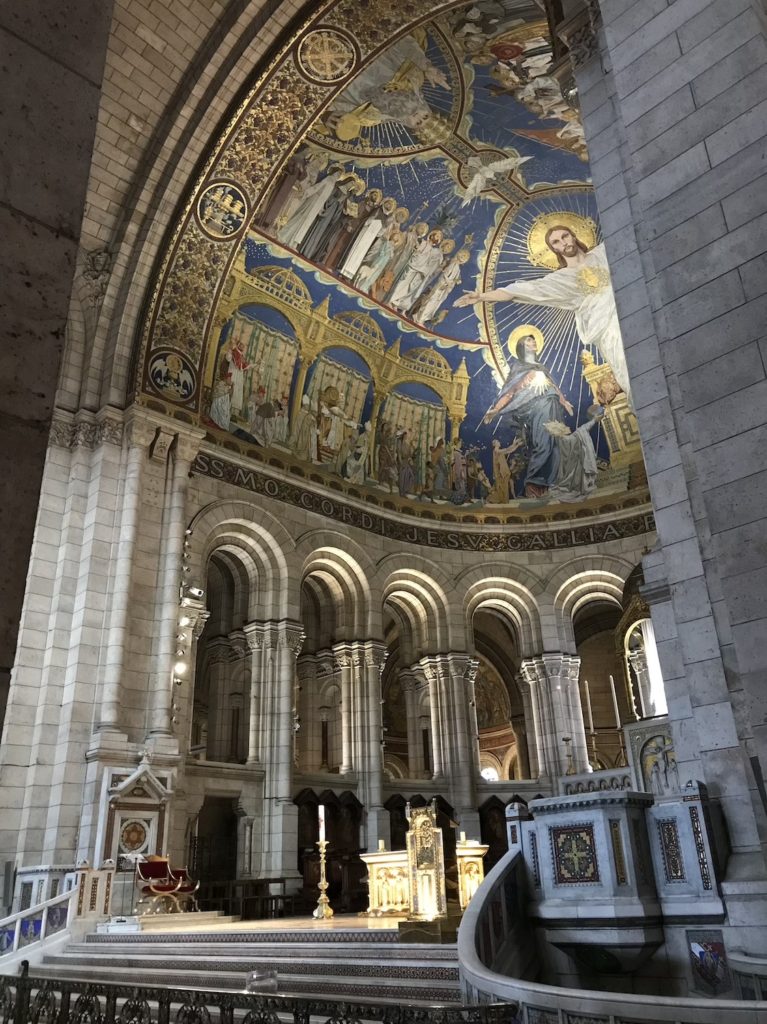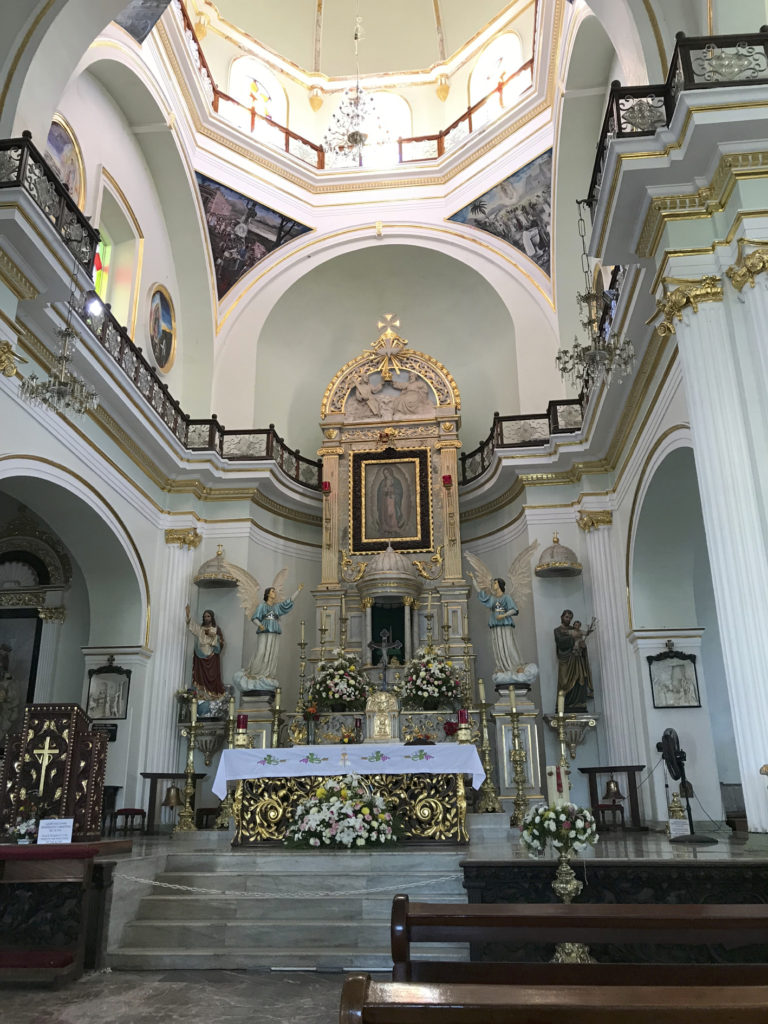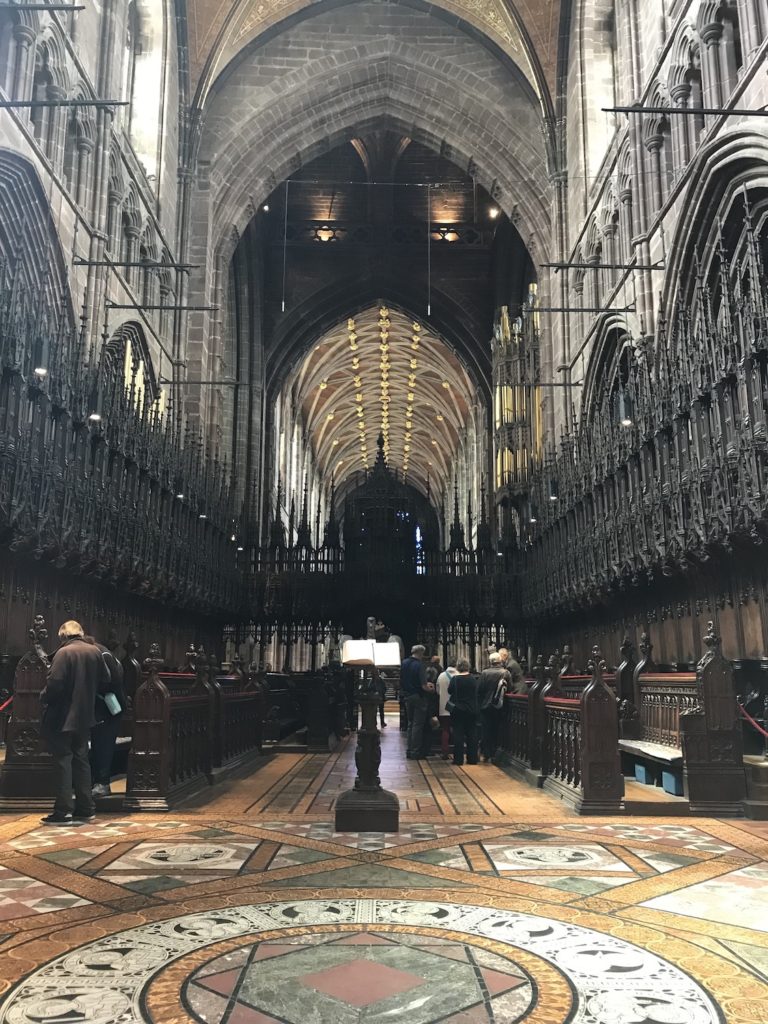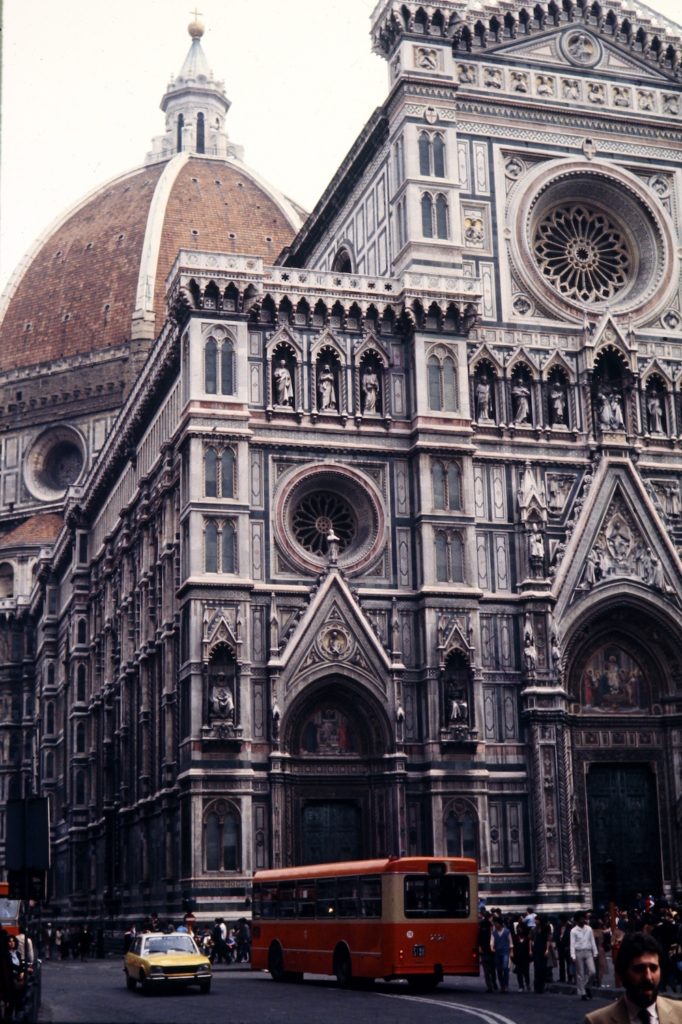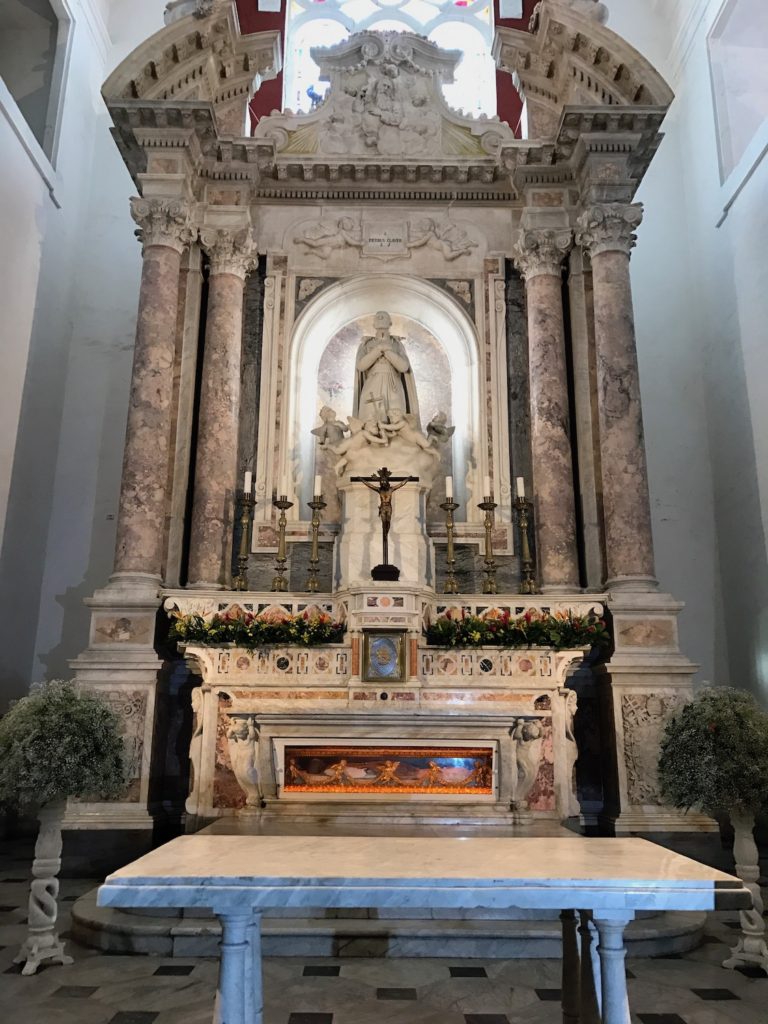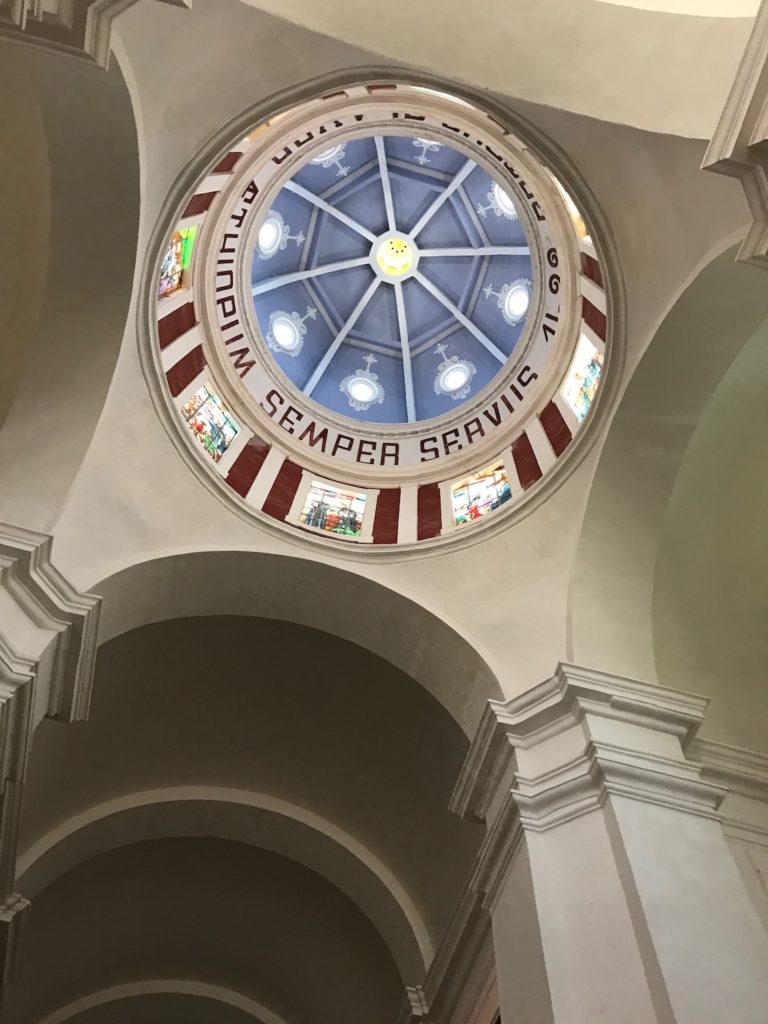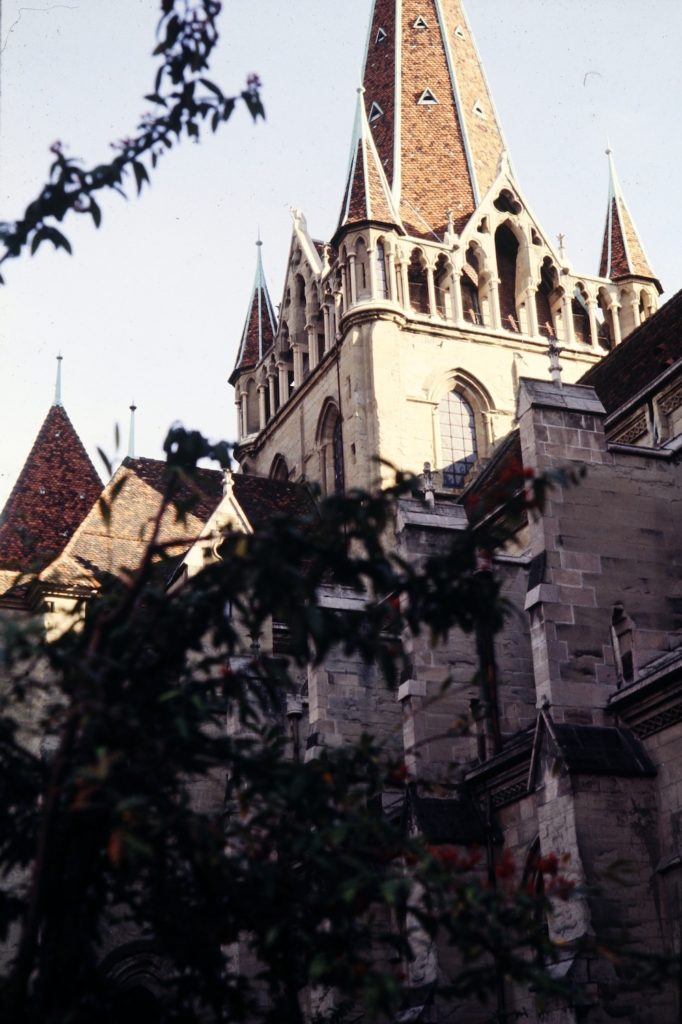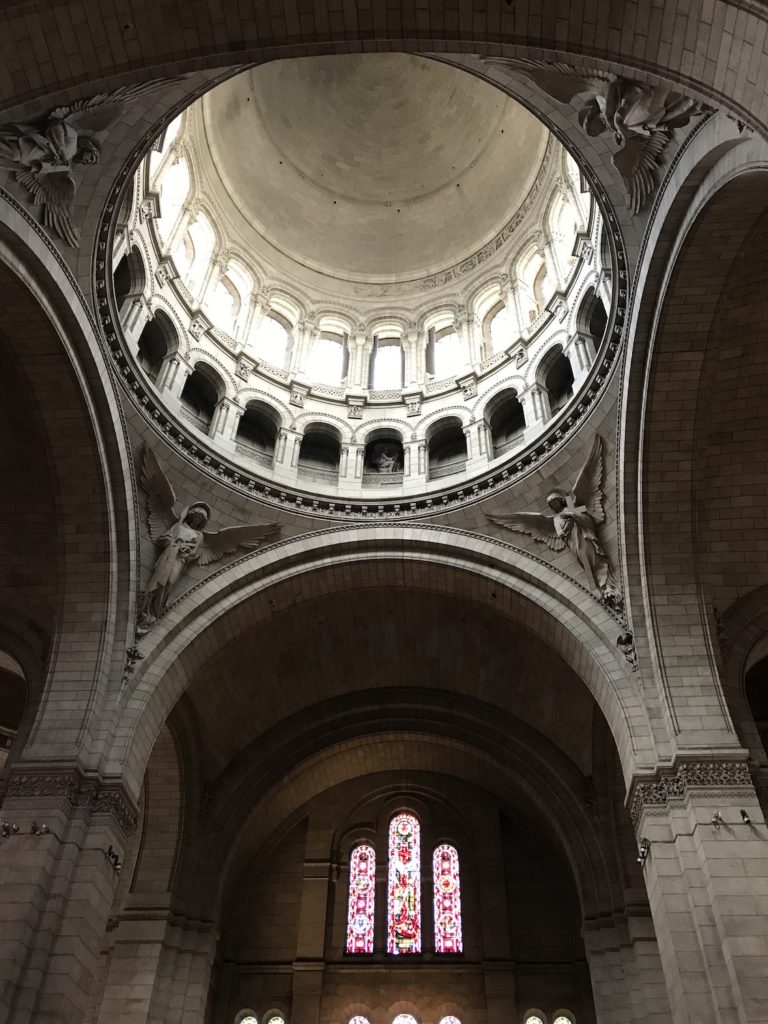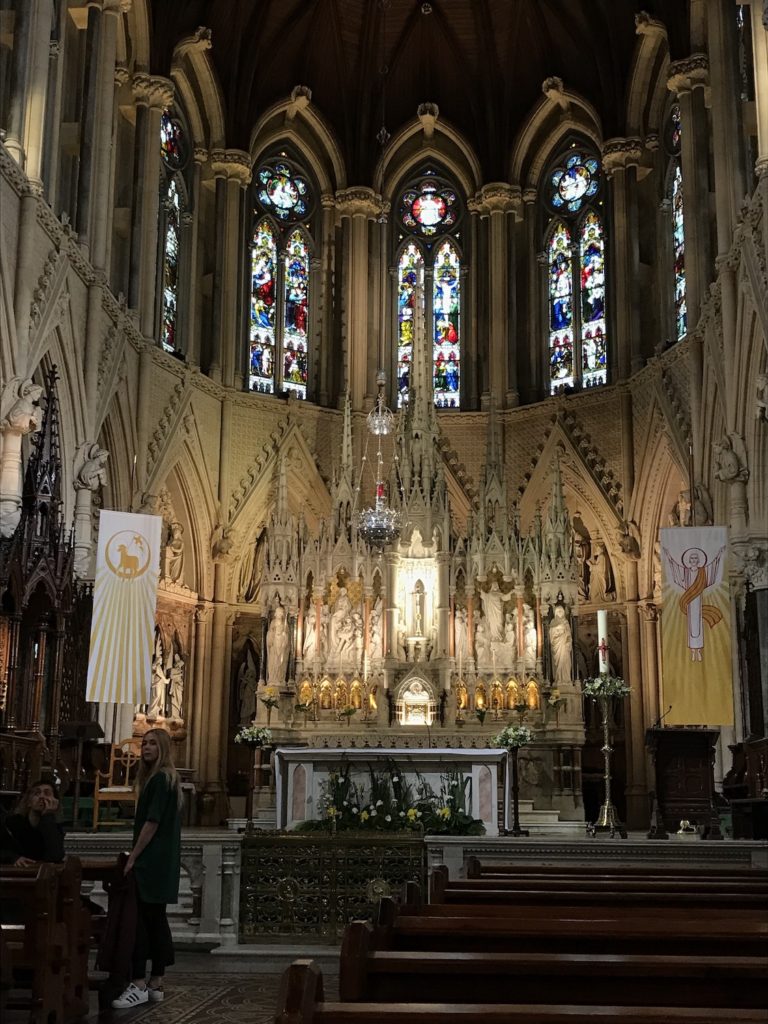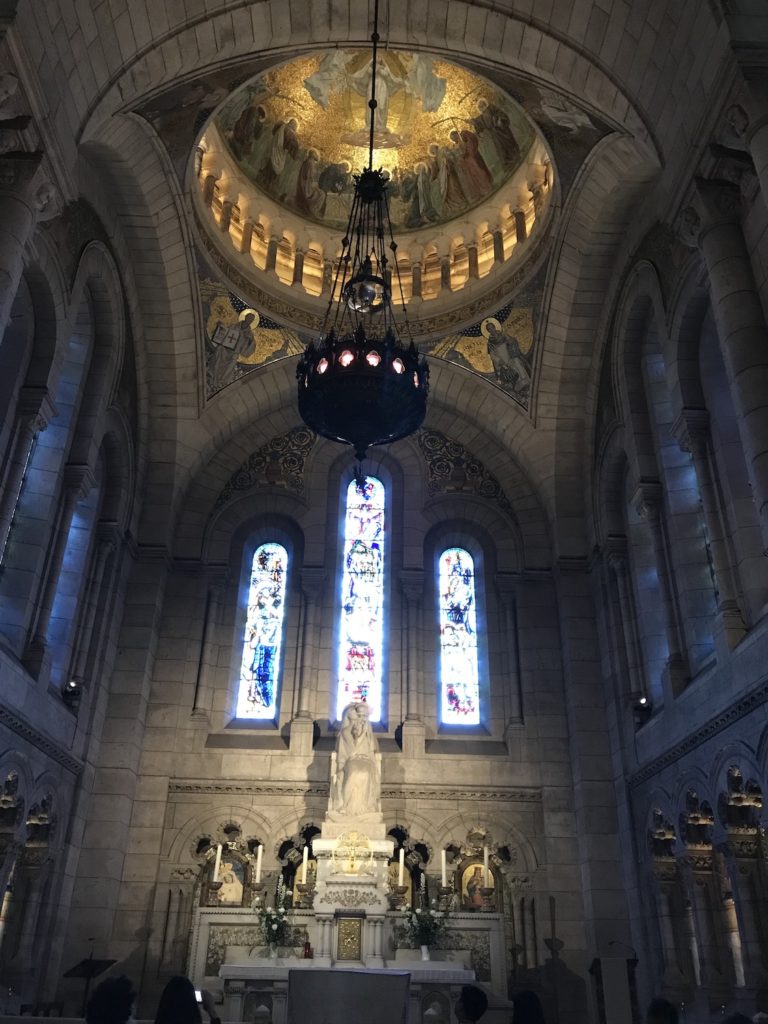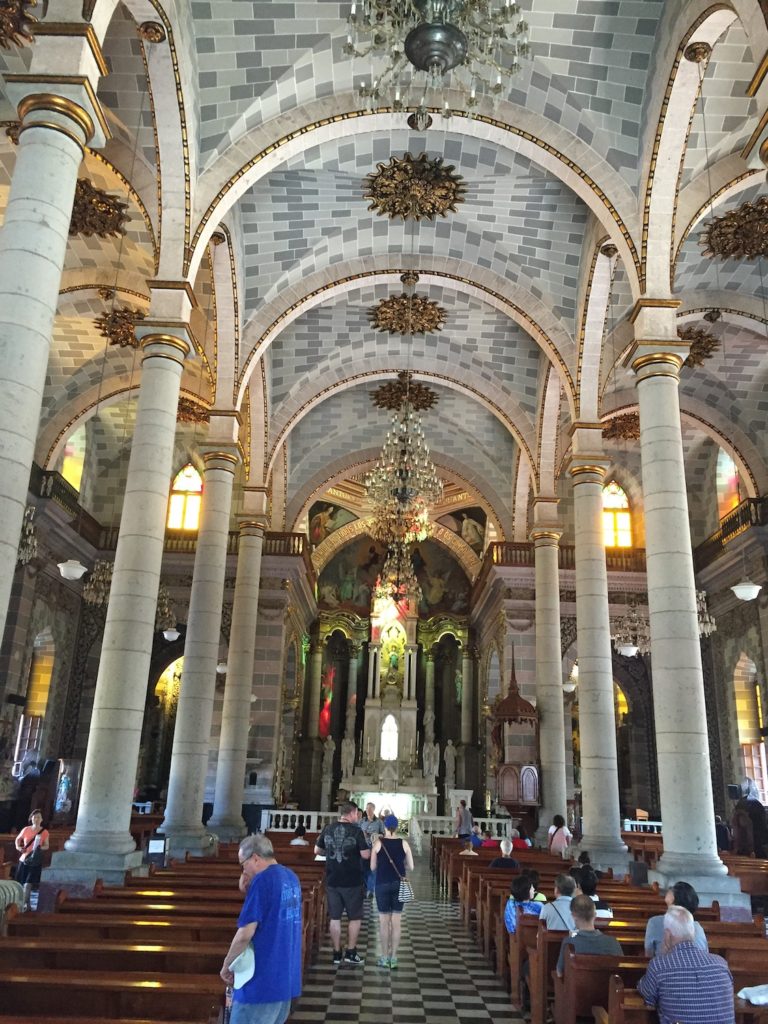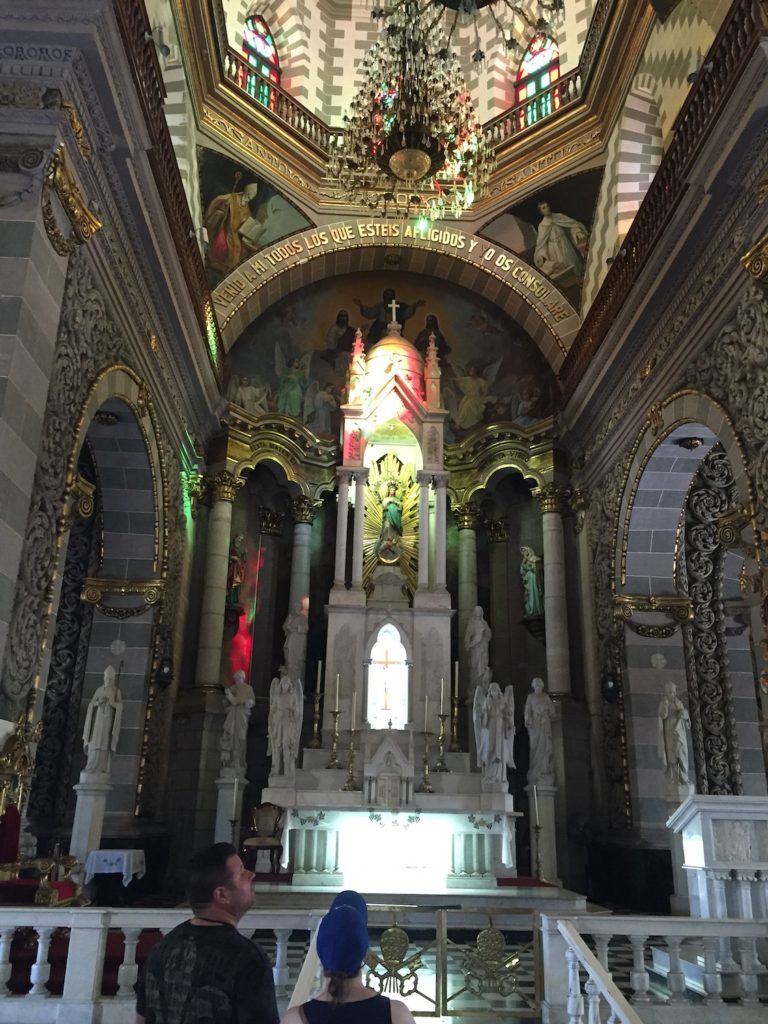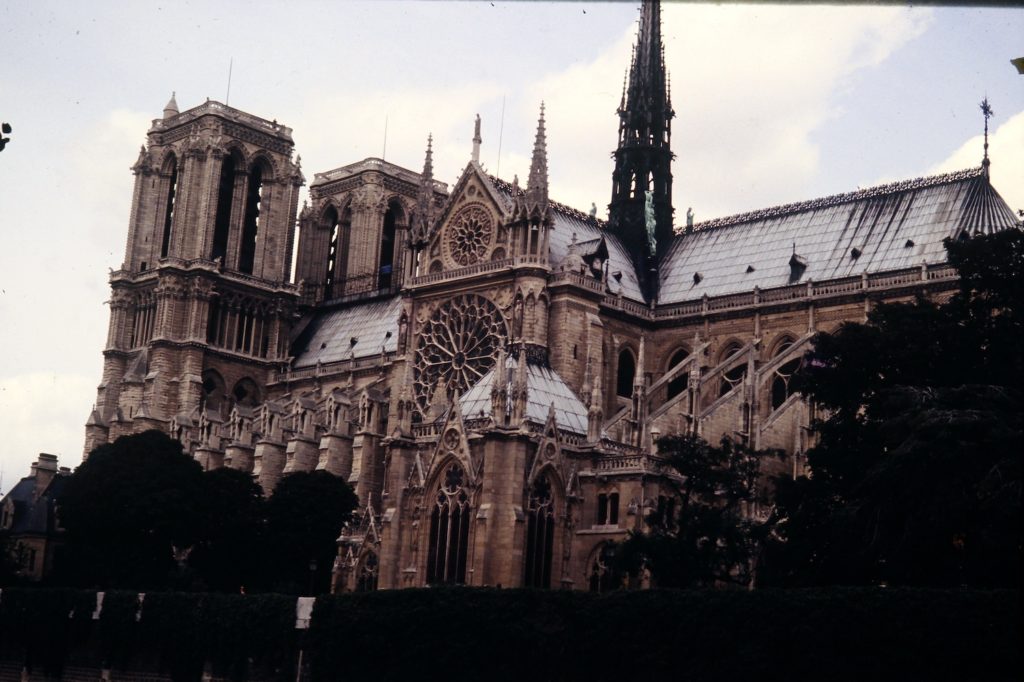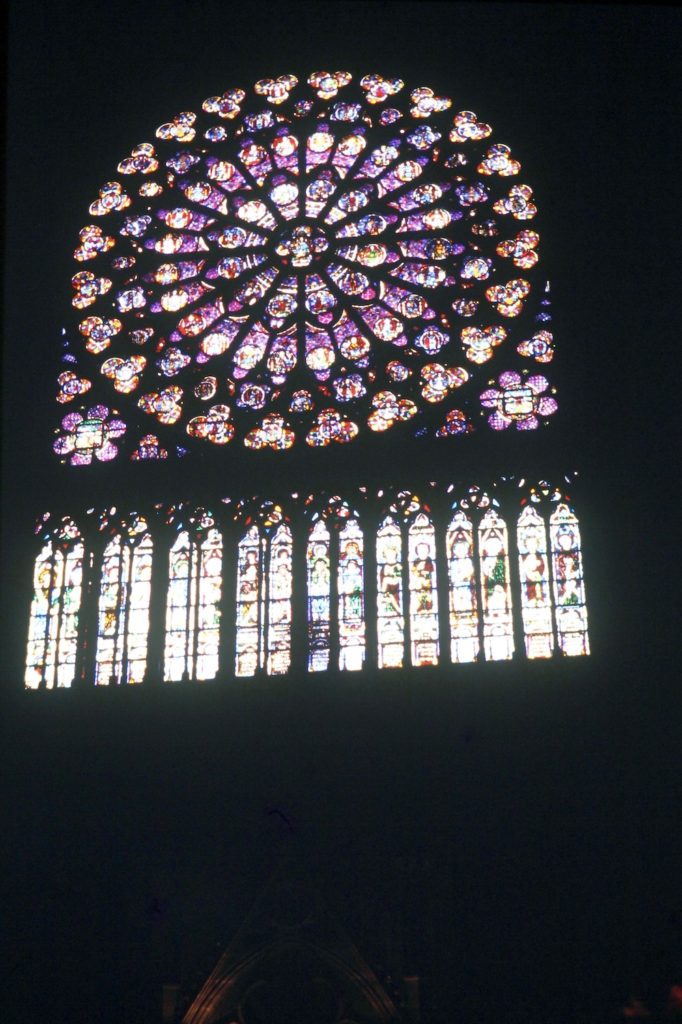On our recent trip to Europe, my wife and I visited a number of cathedrals some of the pictures of which I shared recently on this blog. They are amazing and impressive structures! I promised then that I’d have a few thoughts on my experiences in these churches, so here they are.

As a frequent traveler, I’ve had the privilege of visiting Catholic and Protestant cathedrals and churches on four continents in many countries over the past forty years. As a Bible expert who also has a broad knowledge of Western religious and cultural history and is an academically trained artist, these monumental edifices, constructed at great effort and expense ostensibly for the “glory of God,” have captured my fascination. And not mine only, but those of tourists worldwide, since in nearly every city where these great churches exist, they are top tourist attractions, even to this day in our agnostic, secular humanistic and rabidly materialistic world. Why this fascination with things religious? (That’s a discussion for another day.) What we will discuss here is, more importantly, what does Elohim think of these architectural endeavors of men to reach him? Are these a sort of manmade ladder trying to reach the gates of heaven?
My ventures into cathedrals, Gothic and otherwise, have occurred in England, Ireland and Scotland including St. Paul’s and Westminster Abbey in London. I also have also visited many in France including Notre Dame Cathedral (before and after the great fire of 2019) and Sacré Coeur both in Paris. My footsteps have also echoed in cathedrals in Switzerland and Italy (including San Marcos in Venice, the Duomo di Firenze in Florence and St. Peter’s in Rome) as well as in Mexico and New York City among other places.
My first trip to Europe was in 1980 where I spent a year studying in Switzerland. During spring break, I ventured into Italy where I spent several days in Rome. By this time, I had visited many cathedrals including Westminster Abbey and St. Paul’s in London, Notre Dame in Paris, and St. Mark’s in Venice, but nothing prepared me for St. Peter’s Basilica in the Vatican. Upon arriving in Rome, I fought my way on foot through a terrifying melee of cars that the inhabitants of that city call normal traffic, and finally found my way to St. Peters Square known as the Vatican. I walked inside of St. Peter’s Basilica, and, overwhelmed, my jaw needed a crutch as I stood transfixed unable to move not unlike one of the numerous marble statues that adorn the place. After what seemed like an eternity, I collected my emotions and sat down on a simple wooden, nondescript chairs (in stark contrast to the wealth and opulence that surrounds them) set out for worshippers, where I remained motionless and almost spell-bound drinking in the awesomeness of the place. My emotional response struck me as strange, since neither I nor my family are Catholic, and, quite frankly, I, at best, had been apathetic toward that church, and even harbored antipathy toward Roman Catholicism. After 45 minutes of just sitting there, I remember thinking, “I can’t take all of the immensity of this place in at one sitting,” and suffering from cognitive and emotional overloading, I resolved to come back the next day to absorb the rest of it. And I did. The majesty, immenseness and artistry of it all was too much to fathom on my first visit.
Scroll forward nearly 40 years, I recently found myself in several European countries again visiting cathedrals. Like magnets drawn to steel, my wife and I were attracted to these cathedrals. After dealing with the initial awe of entering any cathedral, one of the first questions to enter my mind was this: what does Elohim think of this colossal and superhuman building projects? What is his perspective?
Immediately a flood of impressions would begin to flood my mind.
First, this cathedral, pick one, anyone, is a monumental and colossal endeavor; it’s a sort of Tower of Babel-like affair on man’s part to reach God.
Second, this is a massive stone, wood, glass and metal endeavor on the part of a religious institution to exert influence and control over the people for the purpose of money and power; it’s an attempt to control the masses of largely ignorant and uneducated people often for selfish carnal and greedy purposes on the part of many religious overlords. Additionally, it seems to be an attempt by a church system to impress and awe its sheep-subjects through grandiose building projects and, at the same time, to hold these same people beholden to church leadership through fear of losing one’s eternal salvation resulting in an eternity burning in hellfire should they be disloyal to said leadership.
Third Gothic cathedrals and similar churches wow the senses in a multiplicity of ways:
- Their soaring architecture causes one to look up—heavenward. Not a bad thing.
- Their stained glass windows tell biblical stories though in an extremely abbreviated and a caricaturised way. Again, not necessarily a bad thing.
- Their stonework evokes solidity, power, stability, strength, endurance and permanence, which reflects the religious institution that commissioned, built and maintains them.
- The artwork of the cathedrals including the engineering of the building itself from the marble flooring and mosaics, up to the ornate altars with their marble statuary, metalwork, intricate wood carvings, the hand-hewn masonry, and the stained glass all serve to lift the human senses, elicit jaw-dropping awe and wonderment, but in what? In the works of men or in Elohim or both? Is this a good or bad thing? This depends on your point of view.
- And then there is the grandiosity of the organ music along with celestial sounds of choirs of men and angelic-sounding boys, which fills these massive cavernous stone, wooden and lead echo chambers in almost divine polyphonic reverberations penetrating not only the edifices themselves, but, in many cases, the stoney hearts of the hearers. For many, including me, this music is soul food that also refreshes my spirit and is attractive because of its beauty as well as its biblical themes. It draws the soul inward and heavenward. Is this not a good thing? Who cannot be deeply moved by this?
How could such a monumental and amazing human endeavor such as the construction of Gothic cathedrals that, in some cases, took hundreds of years and thousands of people to build, and the religious institutions that built them be totally devoid of God or Elohim? What peasant who lived and died in the shadow of one these immense structures, some of whose towers reached nearly 300 feet heavenward and dominate the skyline for many miles around, in their right mind would deign to question whether this was a God-thing or not? To question might mean losing one’s eternal salvation if not their land and property and, possibly even their physical life.
Even though the Creator of heaven and earth does not and cannot dwell in any building made by human hands, still, worshippers of the Creator, by whatever name they call him, need a place to gather out of the cold, dark and rain to seek him collectively. Why not make such a place as beautiful as possible, so that he can be worshipped in the beauty of holiness?
After all, didn’t the Almighty commission the children of Israel to build him a tabernacle and later a temple for him to dwell in the midst of them, and a place where they could congregate to give him his due?
So what does YHVH Elohim think of all of this?
It would be foolish and presumptuous of me to assume that I have the definitive answer to this questions, but as I pondered these questions, while wandering around in several cathedrals on my latest trip to Europe, several strong impressions floated to the top of my mental pool of thoughts.
True, these churches were, I suspect, to one degree or another, built to impress and control the masses for the benefit of the religious and regnal elite, and although they were often built to satiate human greed, lust for power and wealth at the people’s expense, is it all bad? There is some good in nearly everything if we just look for it.
In contradistinction to the secular and religious leaders who orchestrated the building of these cathedrals, what about the common people?
Yeshua’s view of the religious leaders of his day, was anything but positive, and I too share a similar view of institutionalized religion and most of its leaders—a system which the book of Revelation calls “Mystery Babylon,” which is comprised of both good and evil, holy and polluted, and a conglomerate of both biblical and pagan elements, and which Scripture metaphorically represents in unglowing terms as a spiritual whore.
Yet, even though Yeshua often eviscerated and rebuked the religious leaders of his day, he, at the same time, treated the little people who had been caught up in these leaders’ religious systems and schemes with tenderness and grace.
Similarly, behind the building of these mighty churches were often the nefarious and ungodly schemes of men to financially rape and control for selfish purposes the common people who came to worship and to seek Elohim in their own simple, naive and uneducated way. Therefore, I cannot judge the hearts of those who in simplicity of heart came (and still come) to seek Elohim the only way they knew. This includes both peasant and lord, as well as many monks, priests and nuns. Who is in the place of Elohim to know much less evaluate how he will judge them in that day for their religious efforts directed the best they knew toward him?
All I know is this: there for YHVH Elohim’s grace go you, me and everyone else who has ever lived. This I also know, I could have been born as one of those hapless and illiterate peasants who was irrevocably tied to the land on which they and generations before them had toiled in impoverished anonymity. I could have been birthed into this untouchable caste class slaving away my entire life for the benefit of the church and nobility under the shadow of their cathedrals and churches (which exist in nearly every town) and castles, with little options in life to do anything else, to go anywhere else or to know anything else.
With these realities in mind, I tend to think that the Elohim of mercy and justice will judge the people more favorably than many of us may think. Even though many of us have left traditional churchianity with an acrimonious taste in our mouths, and some of us, sadly, even still harbor a supercilious heart attitude toward our Christian brethren, we might want to rethink our position in light of a gracious Elohim. If you hold a negative if not bitter disposition toward the church, I am praying that you will find the heart of our magnanimous and gracious Father in heaven who causes it to rain (a blessing, not a curse) on all people including the just and the unjust, at the very least, and, at the most, is even now regathering his lost sheep of the house Israel from many places in many lands out of many churches in preparation for the second coming of our Messiah. The very people Yeshua commissioned us to help regather or those who are going to these churches and cathedrals. Many of you used to go there too, but YHVH in his mercy has opened your eyes and you’ve heard his voice to “come out her my people” (Rev 18:4) He will yet do the same for many of them.
In conclusion, to be sure, the most glorious church building on earth is nothing at all compared to the most common place and taken-for-granted regularly occurring aspect of Elohim’s creation such as a sunset, a lily flower, a starry heaven, a waterfall or a snow-capped mountain, a mountain stream, a butterfly, the human body, a loving human family and a saved person whose name is written in the Lamb’s book of life. The most opulent and extravagant Gothic cathedral is little more pile of refuse compared to these. This speaks to the greatness of our Elohim and to men’s puny efforts to give him the honor, praise and worship he is due. Give YHVH Elohim the glory!
